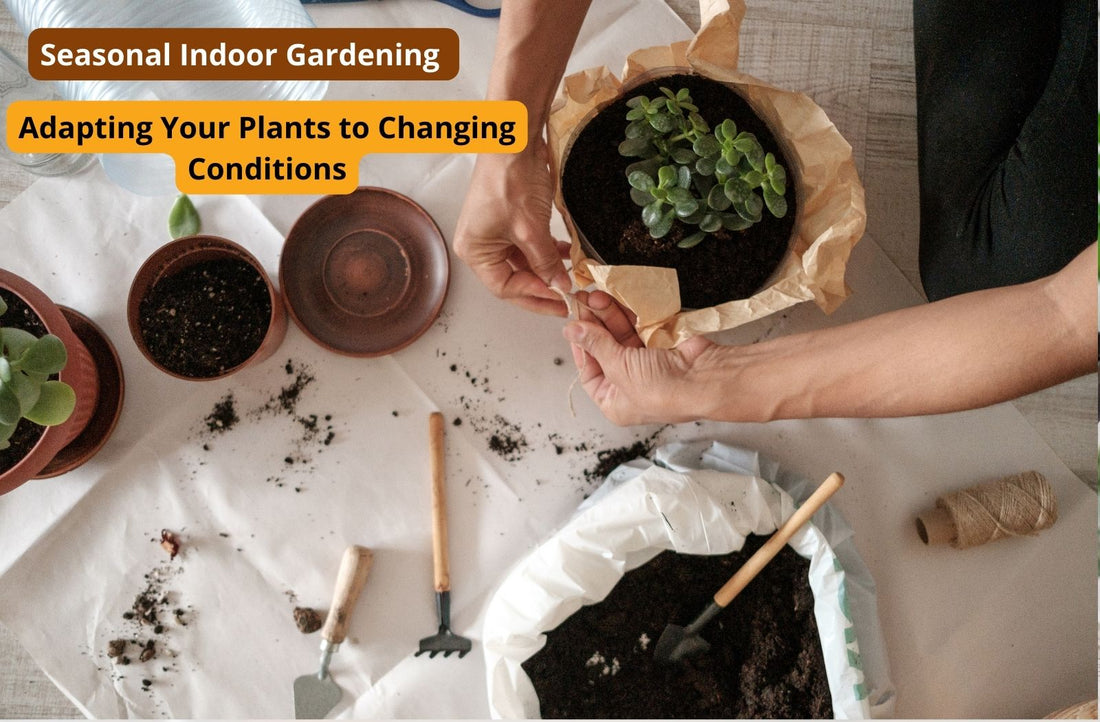Indoor gardening is a year-round endeavor, and as the seasons change, so do the needs of your beloved plants. Adapting your care routine to account for temperature, humidity, and light variations is crucial for maintaining healthy and thriving indoor greenery. In this guide, we'll explore how to care for indoor plants during different seasons, ensuring they receive the attention they need as conditions shift.
1. Spring: Renewed Growth and Vigor
As temperatures rise in spring, plants experience a surge in growth. It's an ideal time for repotting and fertilizing.
Care Tips:
- Repotting: Refresh the soil and upgrade your plant's pot if it has outgrown its current container.
- Fertilizing: Begin or increase fertilization to support new growth. Choose a balanced, water-soluble fertilizer.
- Increased Watering: With higher temperatures, plants may need more water. Adjust watering frequency but be cautious not to overwater.
Key Plants: Spring is an excellent time for flowering plants, herbs, and plants with active growth periods.
2. Summer: Managing Heat and Light Intensity
Summer brings warmth and longer days, but intense sunlight can pose challenges. Protect your plants from heat and excessive sunlight.
Care Tips:
- Shade and Protect: Move sensitive plants away from direct sunlight during the hottest parts of the day. Consider using sheer curtains or blinds to filter intense light.
- Hydration: Be mindful of increased evaporation and ensure adequate hydration. Water early in the day to prevent water loss through evaporation.
Key Plants: Succulents, cacti, and heat-tolerant plants thrive in the summer. Consider moving shade-loving plants to areas with indirect light.
3. Fall: Transitioning and Preparing for Winter
As temperatures start to drop, plants prepare for dormancy. Adjust watering and monitor temperature changes indoors.
Care Tips:
- Reduced Watering: With lower light levels and cooler temperatures, plants may need less water. Allow the top inch of soil to dry before watering.
- Inspect for Pests: Fall is a good time to inspect plants for pests before they become dormant. Treat any issues promptly.
- Adjust Lighting: As daylight decreases, supplement with artificial lighting if necessary, especially for light-sensitive plants.
Key Plants: Focus on transitioning plants that go dormant in winter. Consider bringing outdoor plants inside before the first frost.
4. Winter: Providing Winter Warmth and Light
Indoor heating can lead to dry air, and shorter days mean less natural light. Adjust your care routine to counteract these challenges.
Care Tips:
- Humidity Maintenance: Combat dry indoor air by placing trays of water near plants or using a humidifier. Grouping plants together can also create a microenvironment with higher humidity.
- Reduced Watering: Adjust watering frequency as many plants experience slower growth in winter. Be cautious not to overwater.
- Artificial Lighting: If natural light is limited, supplement with artificial lighting. Use grow lights to provide sufficient light for plant health.
Key Plants: Winter is a time for hardy, low-maintenance plants. Consider winter-blooming varieties to add color.
General Tips for Seasonal Indoor Gardening:
- Monitor Light Levels: Pay attention to changes in natural light and adjust the placement of your plants accordingly.
- Temperature Consistency: Try to maintain a relatively consistent temperature in your indoor space. Avoid placing plants near drafts or heating vents.
- Rotation: Periodically rotate your plants to ensure even exposure to light on all sides. This is especially important during seasons with less daylight.
- Gentle Transitions: When moving plants indoors or outdoors with seasonal changes, acclimate them gradually to prevent stress.
- Observation: Regularly inspect your plants for signs of stress, pests, or diseases. Early intervention is key to maintaining plant health.
By tailoring your care routine to the specific needs of your indoor plants during each season, you create an environment that fosters growth and well-being. Seasonal indoor gardening is not only about adapting to changing conditions but also about connecting with the natural rhythms of plant life. With these tips, your indoor garden can thrive year-round, bringing joy and greenery to your living space in every season.
Next step
Gardener services
Landscaping services
Online nursery
Organic pesticides and fertilizers
Extra reading
Getting the garden ready for Summer
Mulching: The Top 5 Benefits You Don't Know About
What's the best time to start planting seeds?
Flowers that Thrive in Poor Soil
Happy Gardening!
Dr. Vandana K.


